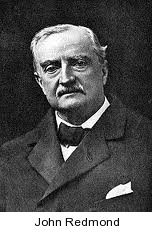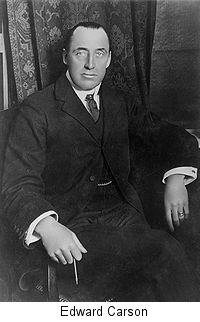Journal Volume 2 1995
The Landing of Arms and Ammunition at Kilcoole, County Wicklow by the Irish National Volunteers in 1914
By James Scannell
Background
In 1914 this country was on the verge of a civil war over the enactment of the Home Rule Act of 1912 under which it was intended to establish a parliament for Ireland with limited powers which would sit in Dublin. Passage of the Act was the high point in the parliamentary career of John Redmond, leader of the Irish Parliamentary Party, the constitutional face of Irish Nationalism.  Opposed to the introduction of this legislation were the Unionists who wished to retain Ireland's link with Britain which had been created with the passage of the Act of Union in 1800 and who were fearful that the Dublin parliament would come under the undue influence of the Roman Catholic Church.
Opposed to the introduction of this legislation were the Unionists who wished to retain Ireland's link with Britain which had been created with the passage of the Act of Union in 1800 and who were fearful that the Dublin parliament would come under the undue influence of the Roman Catholic Church.
Home Rule had been first moved by Parnell in 1885 when he managed to persuade Gladstone to introduce a Home Rule Bill for Ireland but this was defeated in the House of Commons. This legislation had the effect of polarising Irish politics into two distinct opposing factions - the Unionists who wished to retain the link with Britain and the Nationalists who wished to terminate that link. A side effect of the Home Rule question was that it united various shades of Protestantism which previously had shown no degree of unity but faced with the threat of being ruled by a parliament which they perceived would be under the control of the Roman Catholic Church, they quickly buried their differences to provide a united front.
The defeat of the First Home Rule Bill in 1886, the fall of Parnell in 1890 followed by his loss as leader of the Irish Parliamentary Party coupled with the division of that party into two separate factions when a new leader could not be agreed upon, all brought some comfort to Unionists North and South and this was heightened by the failure of the Second Home Rule Bill in 1893.
 At local level however Nationalists began to hold majorities on local government boards in the South but in the North the Unionists still held the balance of power as they did in key locations in the South.
At local level however Nationalists began to hold majorities on local government boards in the South but in the North the Unionists still held the balance of power as they did in key locations in the South.
In 1900, John Redmond, a supporter and follower of Parnell, became leader of the Irish Parliamentary Party and under him the two disunited factions were united into one. Over the next decade the party supported the Liberals in government who brought many reforms and enacted legislation for Ireland under a policy known as 'killing Home Rule with kindness'. But Redmond never forgot the aim of Home Rule and in 1910 when the support of the Irish Parliamentary Party was needed by the Liberals to remain in office, Redmond extracted a promise from them that they would enact a Home Rule Bill for Ireland.
When this became known, Unionists were outraged that again their worst fears were realised. Dublin barrister Edward Carson was selected to lead the Unionist campaign against Home Rule and very quickly great support for the Unionist Cause was generated. The final obstacle to the successful enactment of the Home Rule Bill was removed when the House of Lords lost the power of veto on legislation enacted by the House of Commons. From 1911 they could only reject legislation three times or delay its passage by two years after which it became law.

